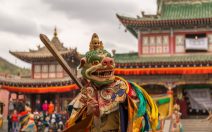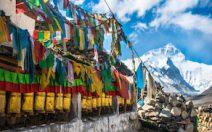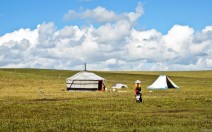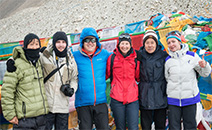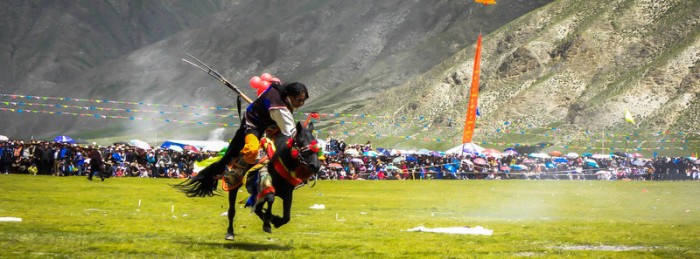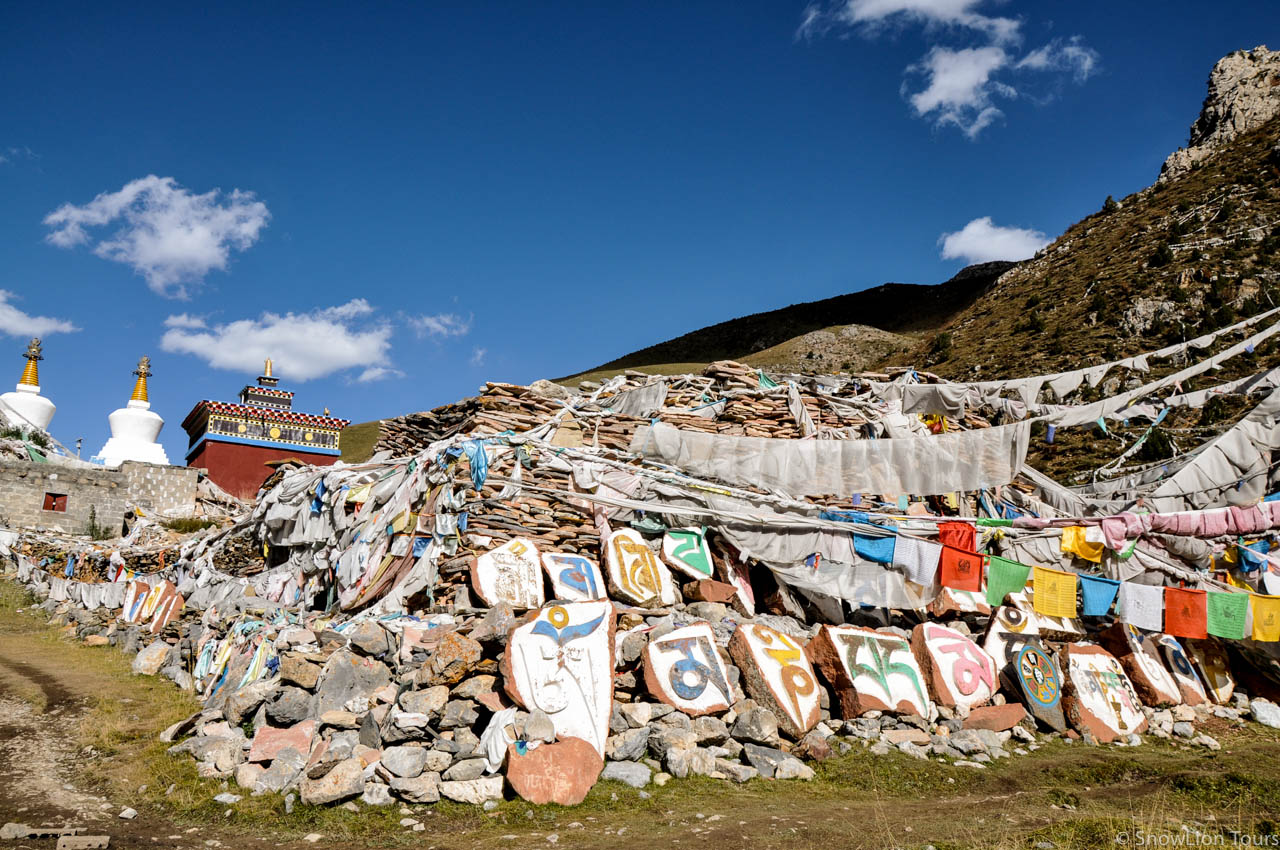Jyekundo or Yushu is a mojor Tibetan town located in Qinghai Province in the northwest region of Kham. Jyekundo town is found along the tributary of the Drichu (Tongtian He), which contribute to upper reach of mighty Yangtse River(Changjiang). It is a town with a long tradition of trade and is as the site of the prestigious Jyegu Monastery, an important Sakyapa Monastery in Kham region. In the ancient times, there was only a small Sakyapa temple which was instructed by Dagchen Sherab Gyatso of Sakya tradition. It was claimed the Dragon Chogyel Phakpa had given teachings here en route for Mogolia. Today, the town of Jyekundu is sprang up around this small monastery as a trading center, controlling the caravan trails between Xining and Lhasa. Given its remote location and large Tibetan population, Jyekundo has a distinctive Tibetan flavor. It’s a must see for anyone traveling through Amdo and Kham.
Jyekundo or Yushu was struck by earth quake in 2010. The whole town is destroyed and left thousands of deaths. The new Yushu is still under construction. There are only few guesthouses you can stay.
There are some famous places to see around Yushu.
Jyekun Monastery,
the hilltop overlooking Jyekundo had been the site of an ancient Bon temple, before Kagyupa temples were built alongside it. Then when Dragon Phakpa passed through in the course of his travel in 1268. He consecrated the site for the construction of a Sakya tradition monastery. Today Jyeku Monastery consist with 16 temples and home to more than 500 monks.
Mini stone,
Jyekundo, the capital of Yushu Prefecture in Qinghai, lies deep within the heart of Kham. The population of Yushu is over 97% Tibetan, and the landscape of Yushu includes soaring snow-capped peaks, verdant forests, glacial rivers, and burly nomads. One of the major attractions of Yushu is the Gyanak Mani Stone Pile in Jyekundo. Mani stones feature carved and painted Tibetan Buddhist mantras. At the Mani Stone Pile, mountains of rocks are stacked upon each other, and carvers sell mani stones nearby if you’d like to contribute to the pile. Pilgrims come from all over to circumambulate the stones.
Trangu Gonpa
This is the seat of the great contemporary Kharma Kagyu scholar and lineage-holder Trangu Rinpoche. Who is now based at Rumtek in Sikkim. There were two buildings here, knows as lower and upper monasteries. The original foundation is attributed to the Fist Karmapa Dusum Kyenpa during the 12th century.
Wencheng temple/ Bida Nampar Nangdze Lhakhang
The Princess Wencheng Temple, located in northern Kham, pays homage to the Chinese wife of the great Tibetan king Songtsen Gampo. Tibetans also revere the site because a buddha is said to have walked through the narrow valley near the temple. Though the temple is small, it is worth visiting to see the the incredible rock carvings on the back wall of the main prayer hall.
The mountains around the temple are excellent for hiking. Tens of thousands of prayer flags flap in the wind, and the view from the top overlooks grasslands and distant snow mountains. During the Tibetan New Year, pilgrims flock to the temple to complete a kora, or circumambulation. Follow the dirt path up the mountains, over the ridge, and back towards a small tea shop. Along the way, you might run into a few nuns or catch a Tibetan woman washing her hair in the river.
Continuing driving inside the valley, you will reach some small hotsprings and the Batang Grassland, where the famous Yushu horse Racing Festival is taken place. The Yushu Horse Racing Festival is on July 25th every year. This had been cancelled after Yushu earthquake struck until 2014.
2014 Yushu Horse Festival is the first time of this event since Yushu had been struck by earthquake several years ago.
